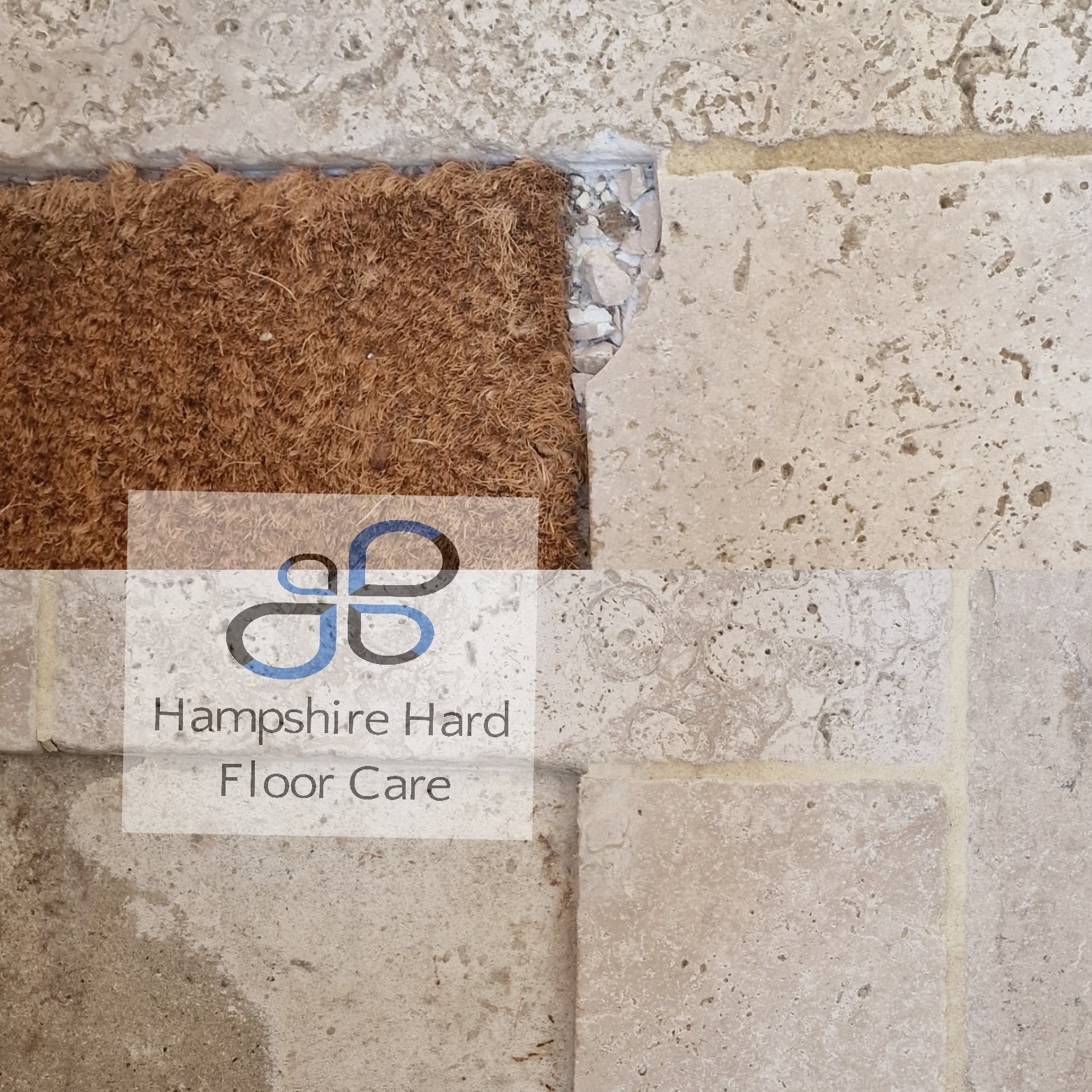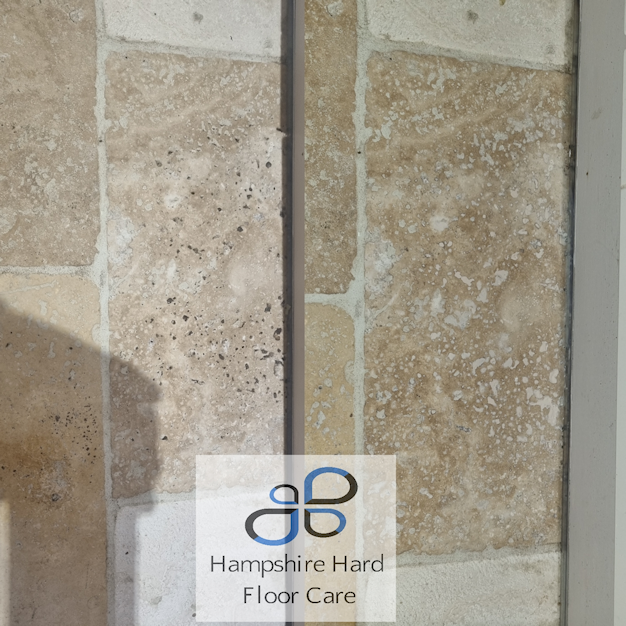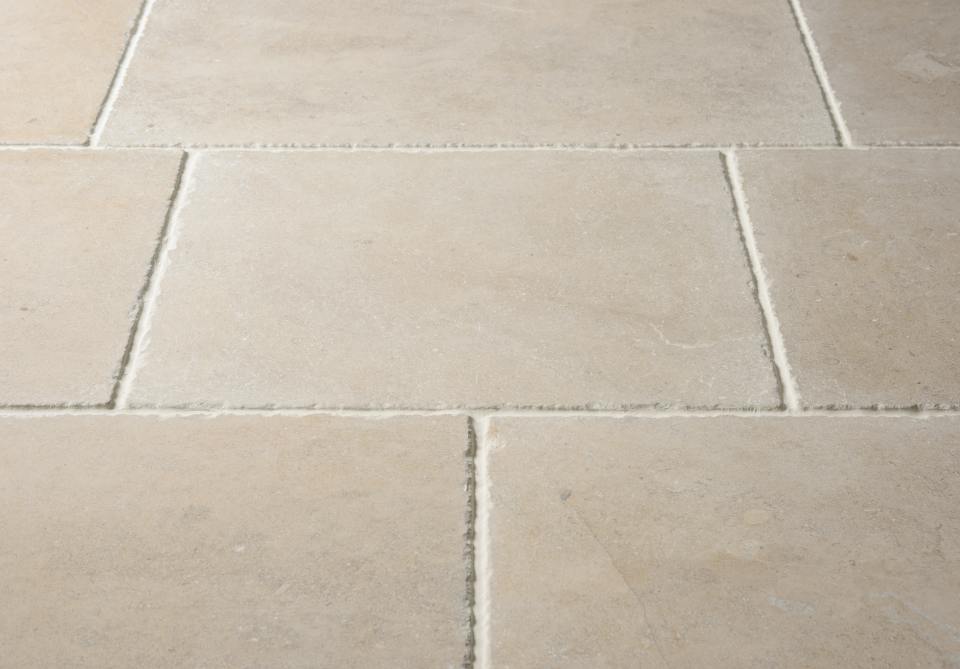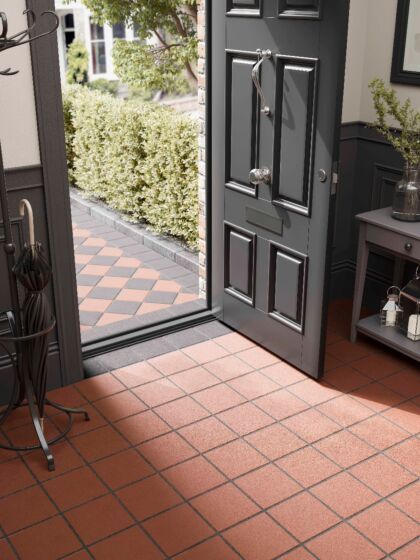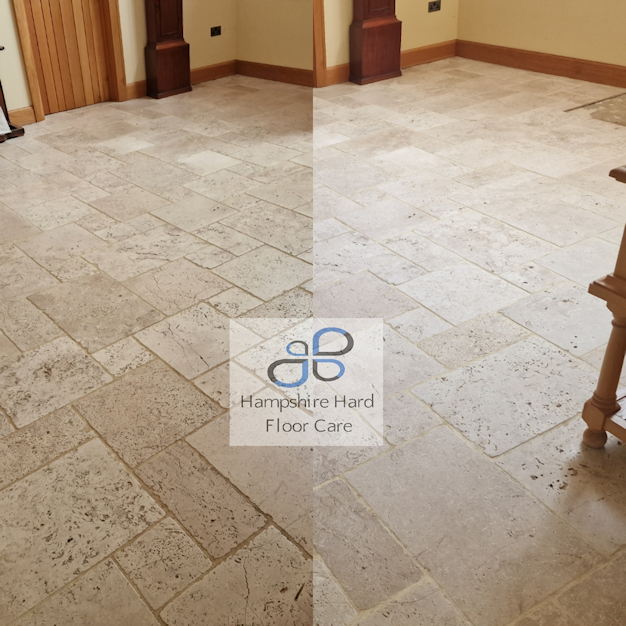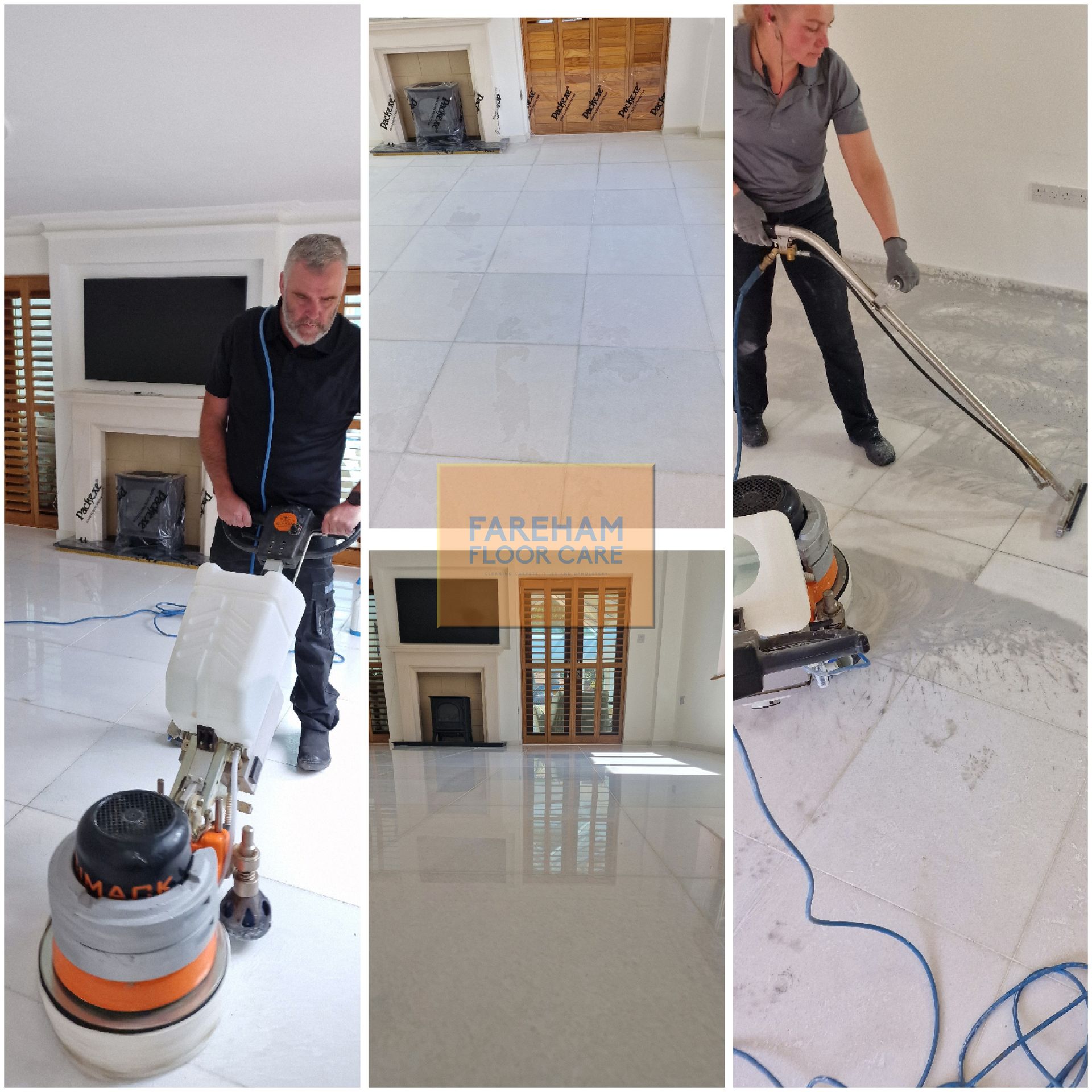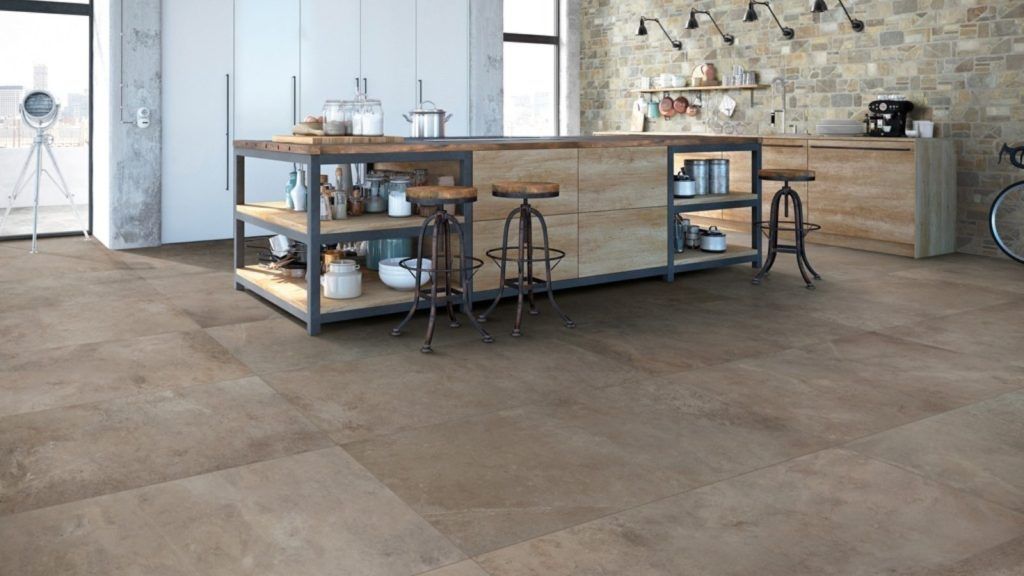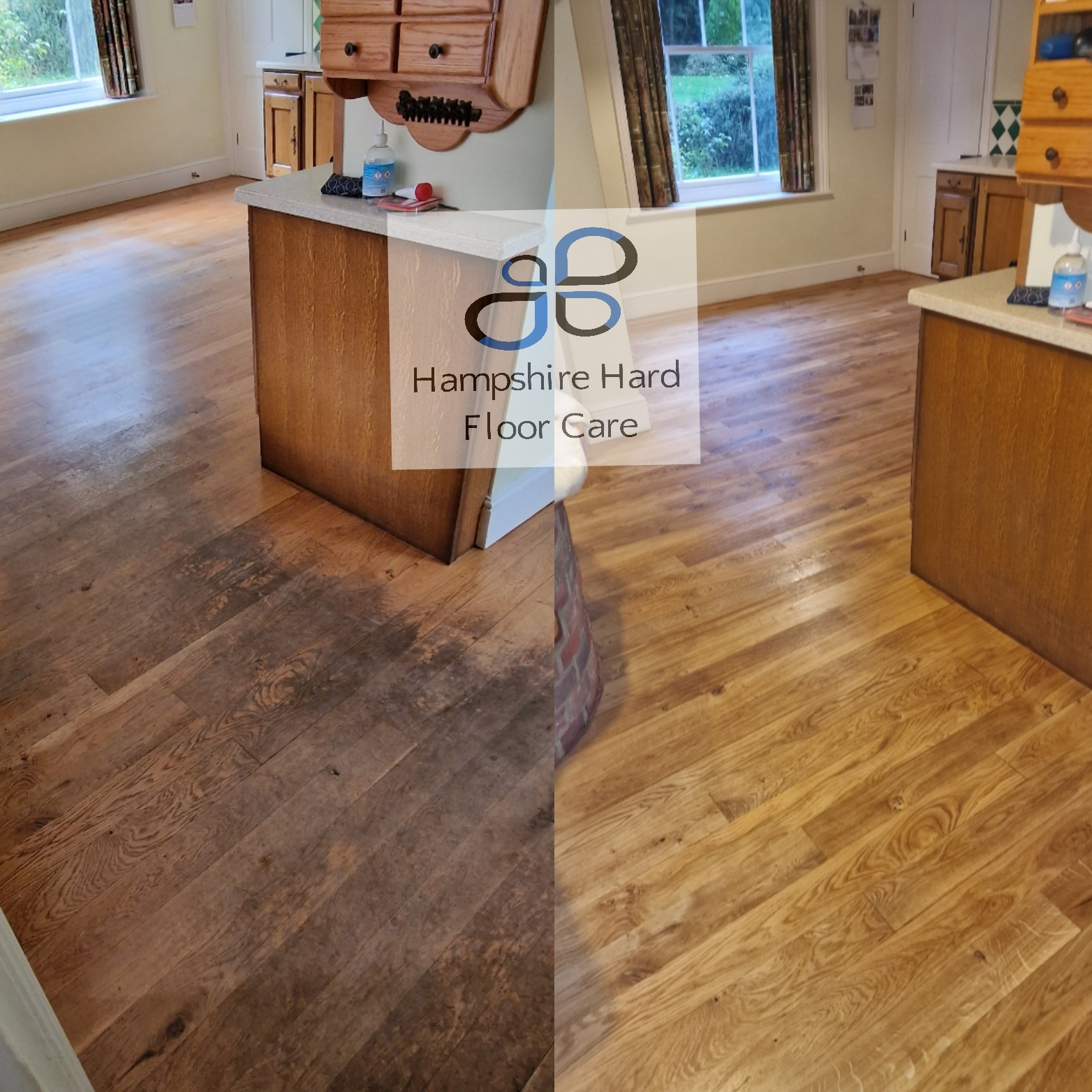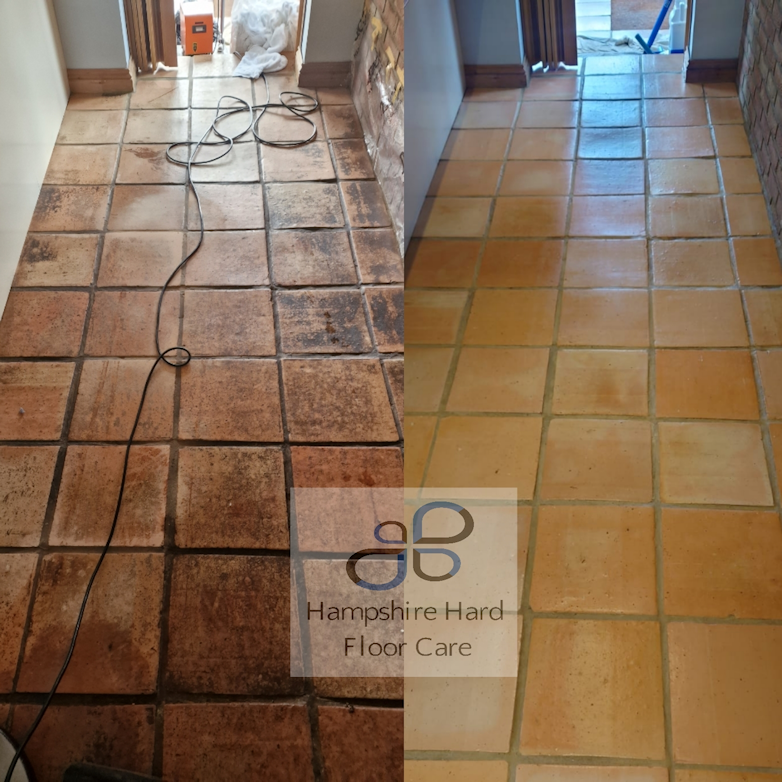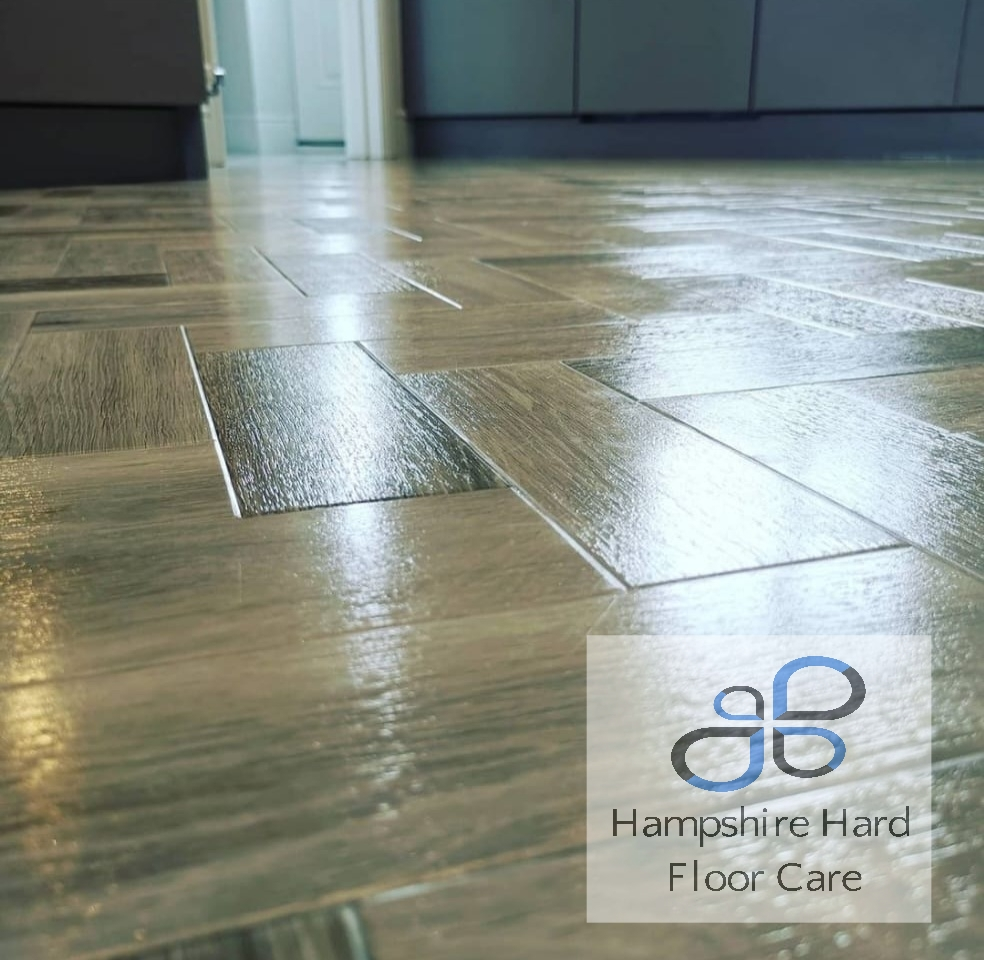Why? Professional Natural Stone Restoration
Natural stone restoration and conservation by Hampshire Hard Floor Care. Experts in mechanical grinding, etch removal, crack repair, and structural stone sealing.
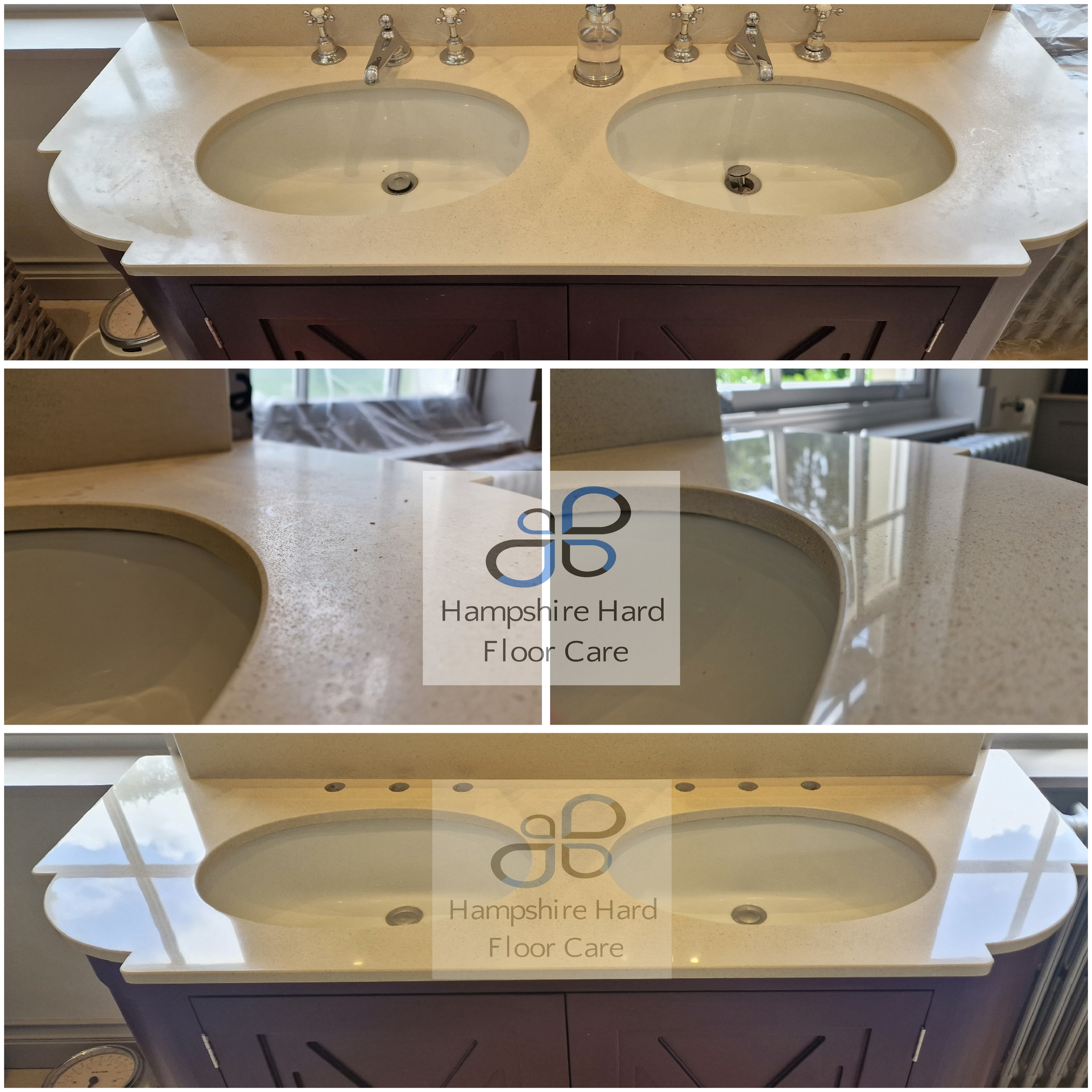
Common Types of Damage in Natural Stone Surfaces
Natural stone, while highly durable, remains susceptible to various forms of damage—both superficial and structural. Understanding these failure modes is critical to selecting the appropriate restoration methodology.
1. Surface Staining
Staining results from the ingress of foreign substances such as oils, tannins, iron oxide (rust), and mineral-laden water. Water-based staining typically manifests as diffuse white or grey hazing due to calcium or magnesium deposits. Rust stains are often localized and originate from oxidizing ferrous metals in contact with the stone.
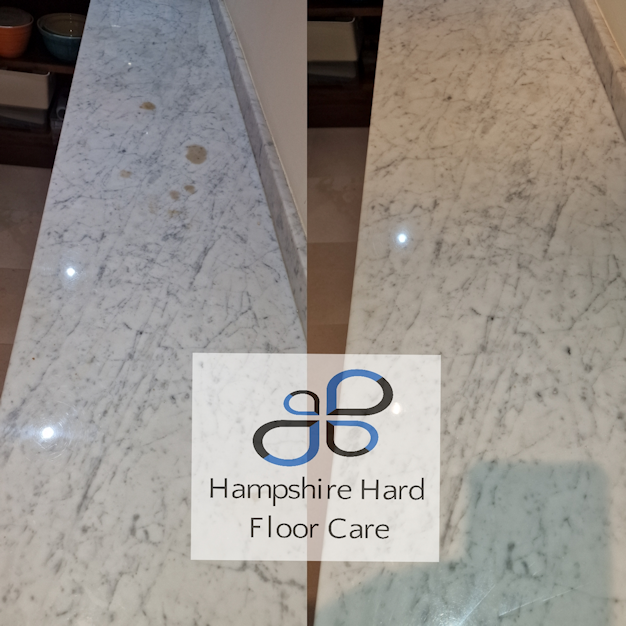
2. Etching (Acid Reaction)
Chemical etching occurs when acidic substances (pH < 7)—like citric acid, vinegar, or certain cleaners—dissolve calcium carbonate-based stones such as marble, limestone, or travertine. Etching is characterized by loss of surface gloss and the formation of matte or hazy patches. Deep etching requires mechanical polishing to remediate.
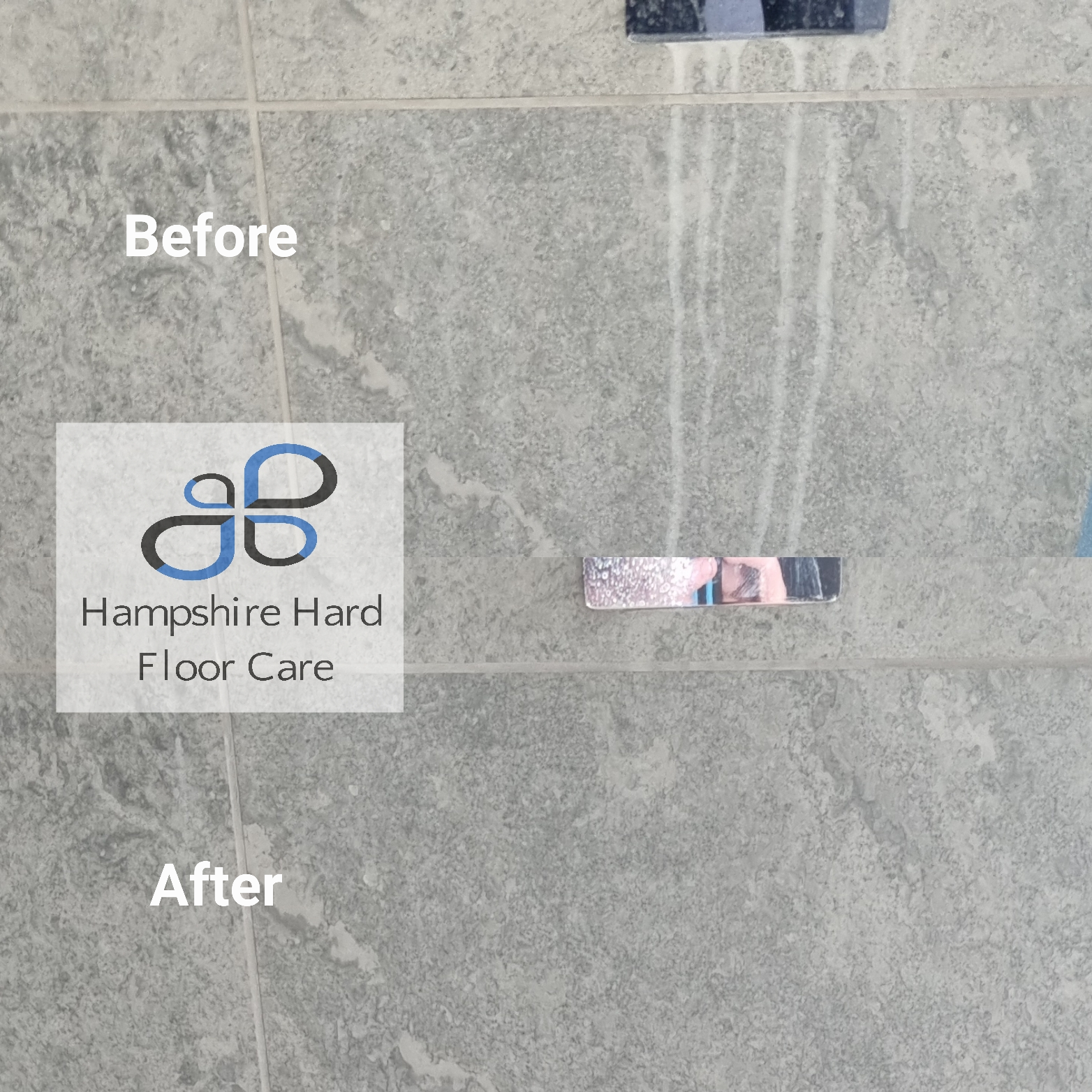
3. Abrasive Surface Wear (Scratch Marks)
Surface abrasions typically result from friction with harder particulates such as silica (sand) or dragged furnishings. The Mohs hardness of the abrasive in relation to the stone dictates the extent of surface degradation. Repeated abrasion results in loss of polish and definition.
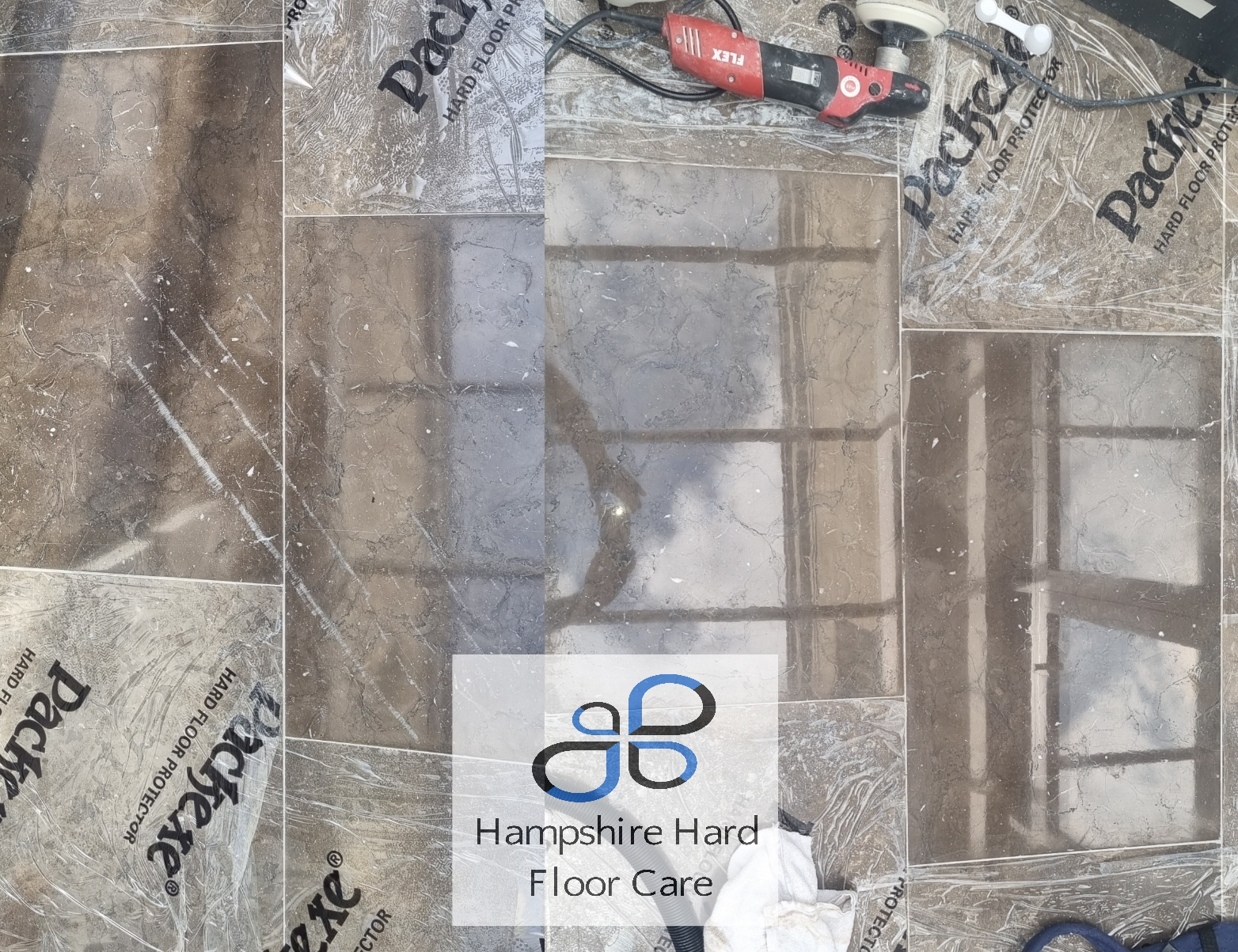
4. Cracking
Cracks may form due to:
- Poor bedding or sub-base compaction
- Thermal expansion
- Mishandling
- Vegetative intrusion (e.g., root heave)
- Inadequate movement joints
Proper substrate design and expansion control mitigate such risks.
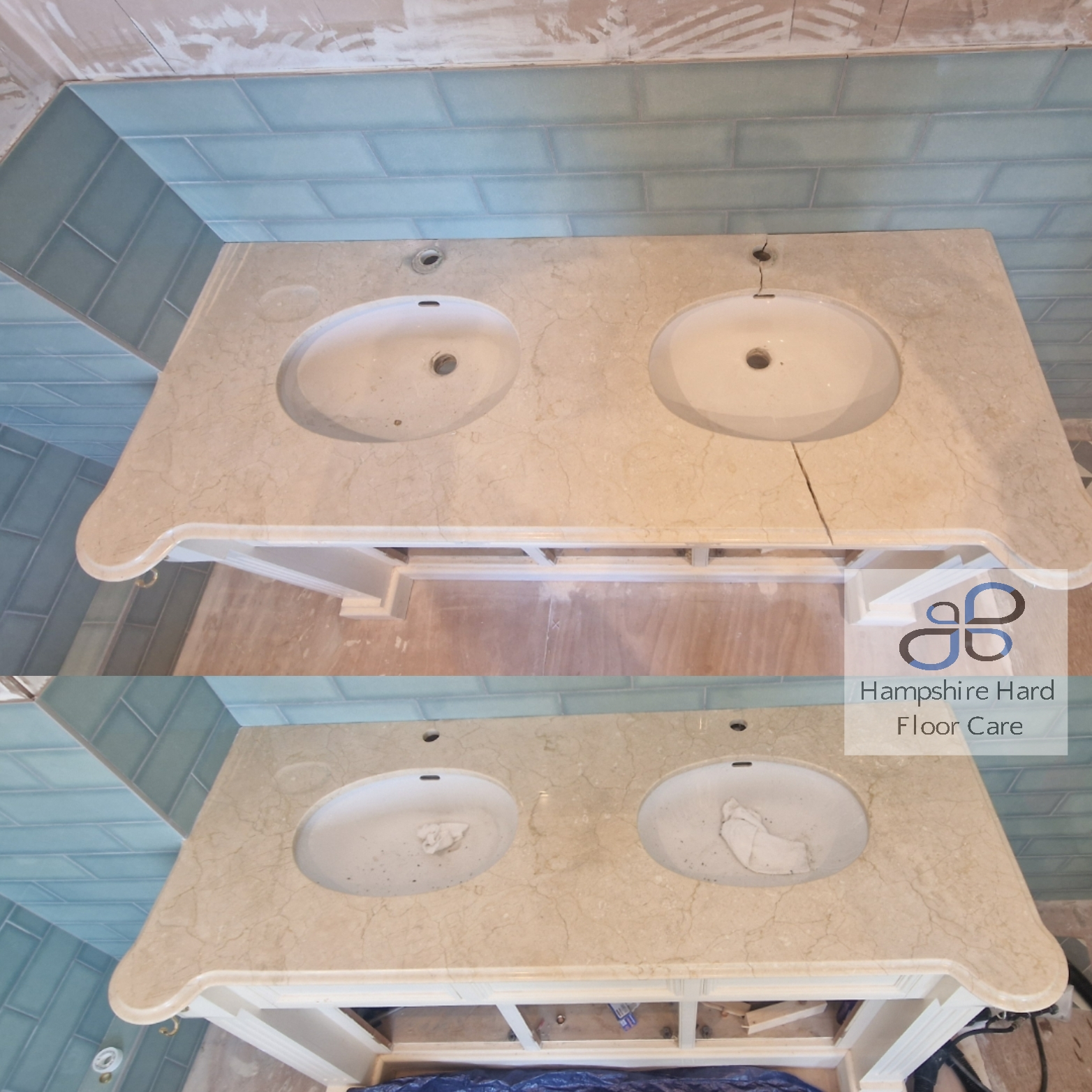
5. Efflorescence
Efflorescence is a crystallized salt deposit forming on the surface as water evaporates. While primarily aesthetic, it can indicate underlying moisture migration. Repeated cycles can lead to sub-surface delamination or spalling over time if not mitigated.
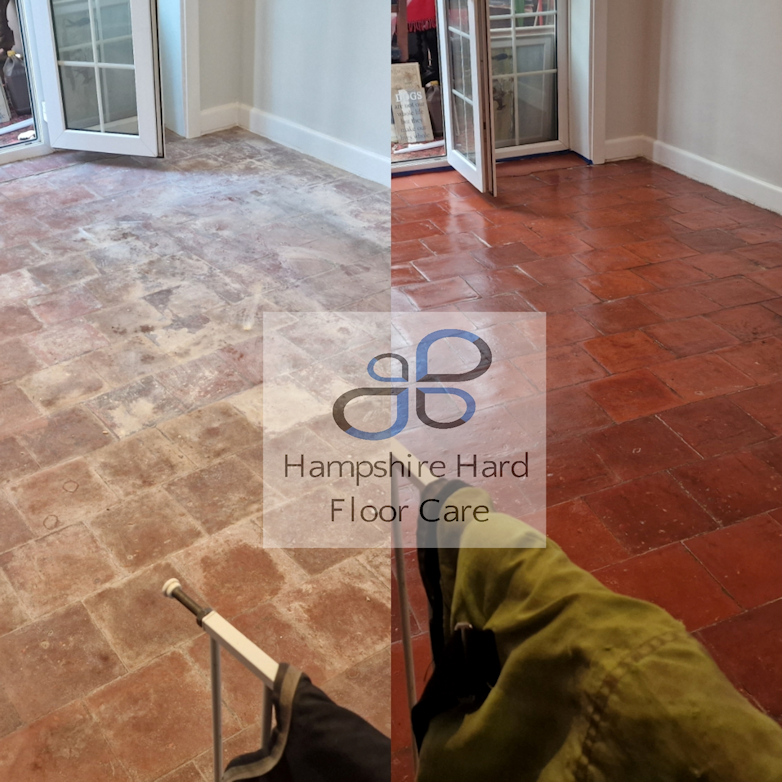
Technical Restoration Protocol
Professional restoration is essential for achieving material integrity and aesthetic recovery. The following multi-stage protocol is standard:
1. Mechanical Grinding (Lippage Removal)
Utilizing industrial diamond abrasives, high-precision grinding removes planar irregularities and prepares the substrate for uniform refinishing. This is critical for bonding during repair of fissures or chip infills.
2. Re-honing
Application of micron-graded abrasive compounds in slurry form restores a consistent finish while eliminating surface micro-defects. This process is ideal for restoring satin or matte finishes in calcium-based stones.
3. Polishing
Utilizing progressively finer abrasives and polishing powders, this stage enhances gloss level and reactivates the stone’s natural optical depth. For calcite-based stones, oxalic acid polishing compounds may be used to chemically enhance surface reflectivity.
4. Sealing
Penetrating sealers (impregnators) or topical coatings are applied based on stone type and environmental exposure. Sealers reduce capillary absorption and chemical reactivity without occluding vapor transmission. Proper sealer selection is essential to avoid discoloration or surface film formation.
Post-Restoration Maintenance
Routine Maintenance:
- Use pH-neutral stone cleaners only
- Sweep or mop regularly to remove grit and prevent abrasive damage
- Flush outdoor installations with low-concentration biocide for algae/moss prevention
Periodic Checks:
- Inspect for microcracks, sealant degradation, or structural displacement
- Schedule resealing based on stone porosity and usage frequency
- Address efflorescence promptly to prevent salt crystallization below the surface
Selecting a Restoration Contractor: Technical Considerations
When contracting a stone restoration service, assess the following:
- Specialization: Verify experience with your specific stone type (e.g., metamorphic vs. sedimentary stones)
- Credentials: Request insurance certificates (public liability and worker’s compensation)
- Process Knowledge: Reputable firms will diagnose failure mechanisms, explain restoration options, and provide a detailed scope of works
- Restoration Philosophy: Ethical providers prioritize conservation over unnecessary replacement
- Equipment: Confirm use of commercial-grade HEPA-filtered grinders, wet polishing systems, and VOC-compliant sealers
Why Hampshire Hard Floor Care?
At Hampshire Hard Floor Care, we bring industry-leading techniques and material science insight to every project. Our technicians are trained in advanced stone care procedures, ensuring precise and long-lasting results. We specialize in:
- Floor and wall cladding restoration
- Etch and stain removal
- Crack and chip repair
- Architectural stone preservation
📞 Contact us to arrange a technical site survey or submit project specifications.
